Choosing the best variety of cucumbers for a polycarbonate greenhouse
To obtain not only an early, but also a rich harvest of cucumbers, gardeners grow them in a polycarbonate greenhouse. This material transmits sunlight well and retains heat. The result of the work also depends on the correct choice of vegetables.
Consider the best varieties and polycarbonate greenhouse cucumber hybrids.
The content of the article
Requirements for cucumbers
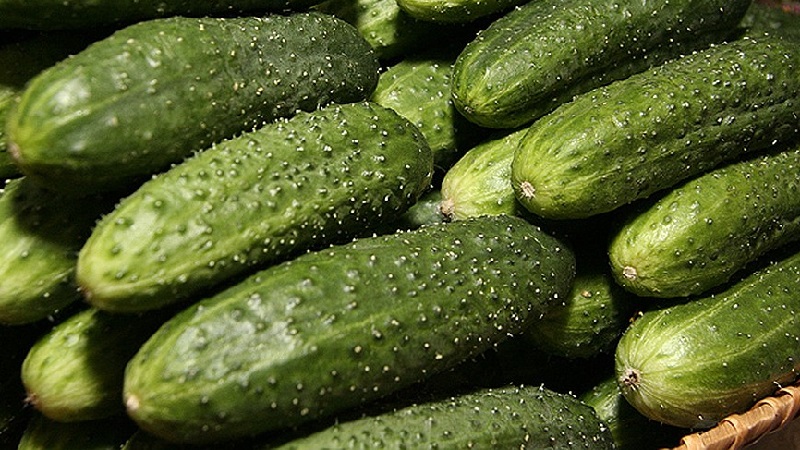
Breeders have developed many varieties and hybrids of cucumbers for cultivation in greenhouses. The main requirement for such species is self-pollination, since it is not easy for insects to get into the greenhouse... For this reason, it is important to choose only self-pollinated or parthenocarpic varieties. The former have both male and female flowers. In parthenocarpics, only female flowering prevails, fruiting occurs without pollination.
Experienced vegetable growers plant 2-3 varieties from different manufacturers in the greenhouse.
Important! It makes no sense to collect seeds of hybrid cucumbers for planting next year: they will lose their parental characteristics.
Review of the best hybrids
The culture is chosen depending on taste preferences, the desire to harvest sooner or later, the productivity of plants and resistance to weather conditions, diseases.
Cupid f1
Amur f1 - early parthenocarpic with bundle formation of ovaries... Its growing season is 5-6 weeks. Gherkin type cucumbers, 12-15 cm long, dark green, slightly tuberous, with a large number of thorns. Mass - 90-110 g. The flesh is crispy, without bitterness. Vegetables are suitable for fresh consumption, pickles. Productivity - 12-14 kg / m2.
The hybrid has good transportability, resistance to cucumber mosaic virus, cladosporium disease, powdery mildew. The culture is grown in all regions.
Goosebump f1
Early and high-yielding (10–12 kg / m2) parthenocarpic. Begins fruiting at 43–46 days. Vegetables are 11–13 cm long, dark green with black thorns. The taste is excellent, without bitterness.
Hybrid resistant to cladosporiosis, powdery mildew. Recommended for growing in the Northern, North-Western, Central, Volgo-Vyatka, Central Black Earth, North Caucasus, Middle Volga regions of the Russian Federation.
Benefit f1
Early maturing self-pollinated a hybrid of salad and canning purposes. Cucumbers grow up to 12 cm, average weight - 90 g. The pulp is not bitter.
Benefis begins to bear fruit on the 45-46 day. Productivity - 11.5 kg / m2. There is immunity to powdery and downy mildew. The culture is grown in all regions, except for Siberia, the Urals and the Far East.
Orpheus f1
Orpheus is an early-maturing high-yielding self-pollinated hybrid with a bundle of ovaries. When grown in spring and summer, it gives 8.6 kg of vegetables, in summer and autumn - 16 kg. Cucumbers are about 12 cm long, with juicy and crunchy flesh.
Important! The culture is recommended for growing in the 2nd light zone (Central region, Ural).
Plants are unpretentious in care, resistant to powdery mildew and cucumber mosaic.
Favorite man f1
These cucumbers are great for salads: they are aromatic and crunchy without bitterness. Dark green fruits are elongated, large lumpy and white-thorn.
The hybrid is early maturing, high-yielding.
Fast and furious f1
Early maturing parthenocarpic, resistant to cladosporium, peronosporosis, powdery mildew... Suitable for all regions. Productivity in a greenhouse - 12.5 kg / m2.
Dark green large-lumpy cucumbers weighing 110-130 g are suitable for canning and pickling, fresh consumption.
Annushka f1
Early maturing (45–55 days) high-yielding hybrid with female-type flowering and bouquet fruiting. Cucumbers are white-thorny tuberous, reach 13 cm in length, weigh 90–120 g. They are used both fresh and canned.
Annushka is resistant to scab, cladosporium disease, powdery mildew, mosaic. From 1 m2 gives 7-8 kg of vegetables.
Maryina Roshcha f1
Early parthenocarpic, fruiting 39–42 days after full germination. Productivity - 10-13 kg / m2. Gherkins no more than 12 cm long, weighing 100–110 g, are covered with tubercles and white thorns.
The hybrid is resistant to mosaic, cladosporium, powdery and downy mildew. Harvested vegetables are well transported and stored for a long time, suitable for canning and fresh consumption.
Selection of variety and hybrid
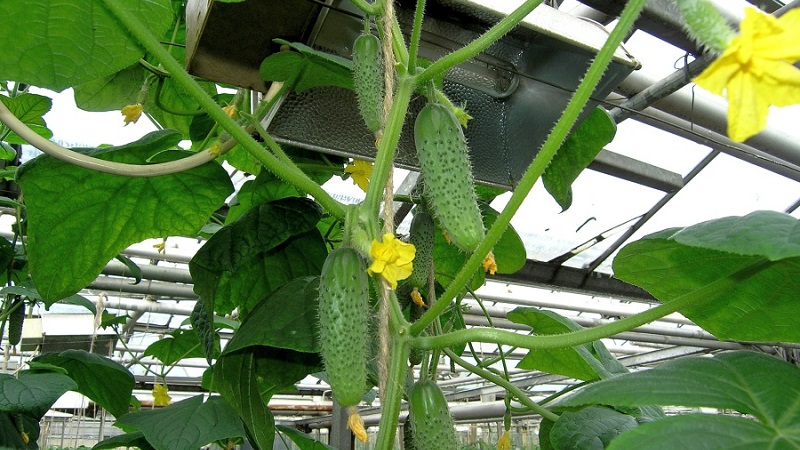
They choose a crop for growing in a polycarbonate greenhouse, focusing on early maturity, yield, climatic features of the region.
Early
Cucumbers, which are grown in spring and summer, are resistant to temperature changes, high yields, but do not grow poorly in the shade:
- Courage f1 - begins to bear fruit 40–43 days after full germination. From 1 m2 gives 16-18 kg of vegetables. Vigorous bushes with bundle ovaries. Cucumbers are lumpy, weighing up to 120 g. Courage is resistant to major diseases.
- Zozulya f1 is a parthenocarpic, but it is better to pollinate it in the first month. The first cucumbers appear on 46–48 days. Up to 25 kg of fruits are harvested from 1 m2. Their length - 14-23 cm, weight - 160-290 g. Vegetables are suitable for fresh consumption, salting.
Late
For autumn-winter cultivation, crops are suitable that tolerate well the lack of sunlight and low temperatures:
- Olympiada f1 is a mid-season hybrid for winter greenhouses. Begins to bear fruit at 58-70 days. The average length of white-thorn cucumbers is 18 cm, weight is 150 g. Productivity is high: 23–33 kg / m2. The culture is not overwhelmed by the cucumber mosaic.
- Ararat f1 - smooth-fruited, begins to give cucumbers 43–48 days after full germination. Productivity - 22-25 kg / m2. Vegetables weigh up to 150 g. There is immunity to powdery mildew.
Self-pollinated
Almost all greenhouse plants are self-pollinated. Among them are the following:
- Alekseich f1 is a versatile early hybrid. Produces gherkins up to 8 cm long with excellent taste. Productivity - 204-545 kg / ha. The plants are resistant to powdery mildew and downy mildew. Recommended for cultivation in the Central Black Earth and North Caucasian regions of the country.
- Matilda f1 is a self-pollinated early hybrid, medium-sized and medium-branched. Cucumbers with white pubescence weigh 70–90 g. Marketable yield - 14 kg / m2.
Without bitterness
Often, due to irregular watering, cucumbers begin to taste bitter. However, such hybrids have been bred that, even with a lack of moisture, retain an excellent taste:
- Egoza f1 is a universal hybrid, resistant to cladosporiosis, powdery mildew, tolerant to downy mildew. Productivity - 11 kg / m2. The taste of large lumpy short vegetables is excellent.
- Golden Duke f1 is an early medium-sized hybrid that tolerates drought well. Yields up to 15 kg / m2. Resistant to powdery mildew and peronosporosis.
Harvest
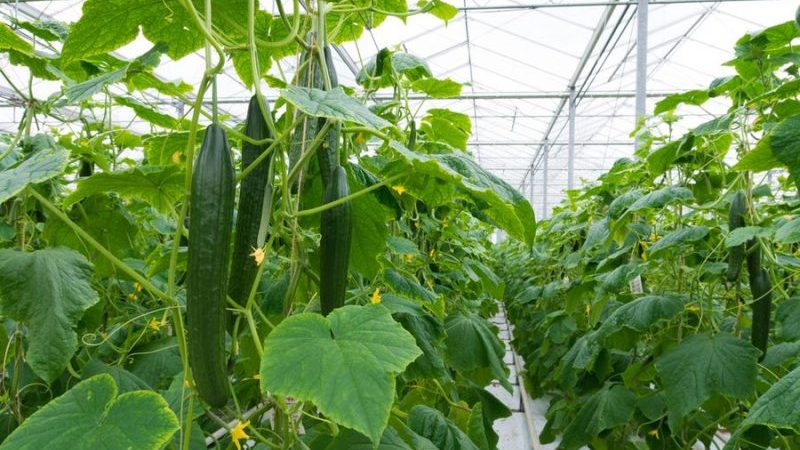
The most productive varieties combine a set of valuable characteristics: early maturity, long-term fruiting, immunity to diseases:
- Pinocchio f1 - early parthenocarpic. The first vegetables weighing 80–120 g give 44–46 days. Up to 13 kg of harvest is harvested from 1 m2. The hybrid is tolerant to peronosporosis.
- April f1 is an early ripening salad hybrid. The average weight of cucumbers is about 200 g, length is up to 22 cm. Productivity is 24 kg / m2.
Sustainable
Persistent immunity to the main diseases of the pumpkin family is one of the important requirements for the culture.
The following cucumbers are suitable for greenhouses:
- The f1 grasshopper is an early universal parthenocarpic. Resistant to powdery mildew, cladosporium, peronosporosis, mosaic. Yields 10-14 kg of vegetables per 1 m2. Begins to bear fruit at 39–42 days after full germination.
- Sugar baby f1 is a mid-early hybrid with immunity to the cucumber mosaic virus, cladosporiosis, powdery mildew. Productivity - 9.4 kg / m2.
Depending on the region
In heated greenhouses, cucumbers are grown in any region. If you want to get a better harvest, pay attention to the zoning of the culture, especially in an unfavorable climate.
Siberia
The following varieties and hybrids are suitable for a harsh climate:
- Vector;
- Katyusha f1;
- Vitan;
- Ob f1.
These are early and mid-season plants, resistant to temperature extremes and diseases.
Reference! Vector, Katyusha and Vitan are bee-pollinated crops.
Ural
In the Urals, the following are especially popular:
- Glowworm;
- Altai;
- Kustovoy;
- Chernomor f1.
The bushes are early and mid-season, resistant to diseases and sudden changes in temperature, high-yielding.
By cultivation goals
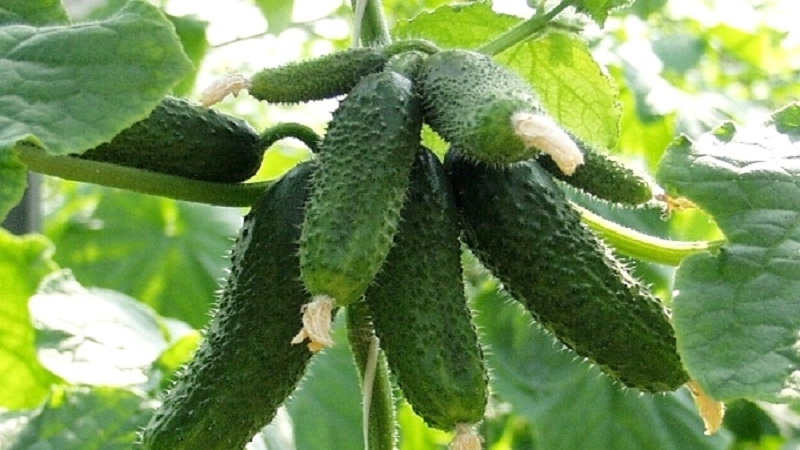
For preservation, mainly late varieties are used: they are not prone to overgrowth, they give cucumbers with dense pulp, without voids.
Such cucumbers are especially popular:
- Bagration f1;
- Harry f1;
- Field Festival f1.
Salad cucumbers are sweet, crunchy, but not suitable for canning:
- Orlik f1;
- Tsarsky f1.
The purpose of each variety or hybrid is indicated on the packaging. Vegetables are also determined by their appearance: white thorns in salad cucumbers, darker ones in salted cucumbers.
Reviews of gardeners
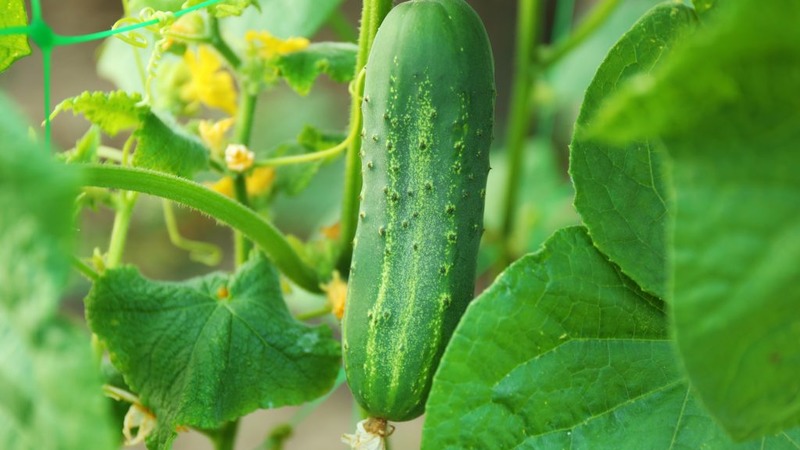
Many farmers speak out positively about growing cucumbers in a greenhouse:
Elizaveta, Tomsk: «For many years I have been growing two hybrids in a row: Zozulya and Murashka. I always get a great harvest of sweet crispy vegetables. "
Vasily, Voronezh region: “I prefer to cultivate early greenhouse cucumbers, such as Anyuta, Emelya. They are good for salads and salting. "
Elena, p. Bayevo: “In a polycarbonate greenhouse every year I grow the best, in my opinion, hybrids: Benefis, Goosebump and Boy with a Thumb. The only pity is that they do not grow from the collected seeds next year. "
Conclusion
Growing cucumbers in a polycarbonate greenhouse is easy. The correct variety or hybrid is chosen depending on climatic conditions, early maturity, pollination, yield, taste and purpose of vegetables. Self-pollinated or parthenocarpic crops with long-term fruiting and strong immunity are well suited for greenhouses.